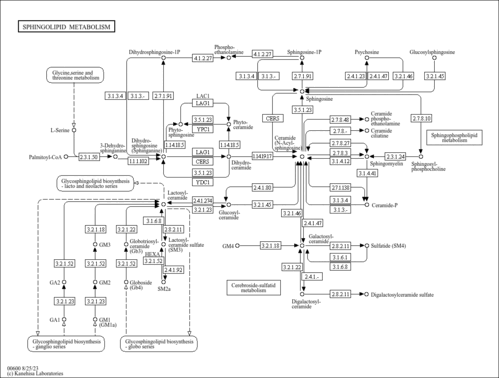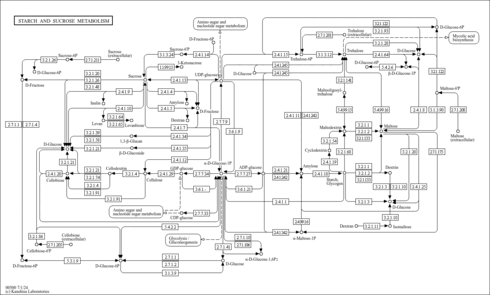| Identification |
|---|
| YMDB ID | YMDB00358 |
|---|
| Name | Calcium(2+) |
|---|
| Species | Saccharomyces cerevisiae |
|---|
| Strain | Baker's yeast |
|---|
| Description | Calcium, also known as ca2+ or calcium ion, belongs to the class of inorganic compounds known as homogeneous alkaline earth metal compounds. These are inorganic compounds containing only metal atoms,with the largest atom being a alkaline earth metal atom. Calcium exists in all living species, ranging from bacteria to plants to humans. Based on a literature review a significant number of articles have been published on Calcium. |
|---|
| Structure | |
|---|
| Synonyms | - Ca
- Ca(2+)
- Ca2+
- Calcium cation
- Calcium element
- Calcium ion
- Calcium, doubly charged positive ion
- Calcium(2+)
|
|---|
| CAS number | 7440-70-2 |
|---|
| Weight | Average: 40.078
Monoisotopic: 39.962591155 |
|---|
| InChI Key | BHPQYMZQTOCNFJ-UHFFFAOYSA-N |
|---|
| InChI | InChI=1S/Ca/q+2 |
|---|
| IUPAC Name | calcium(2+) ion |
|---|
| Traditional IUPAC Name | calcium(2+) ion |
|---|
| Chemical Formula | Ca |
|---|
| SMILES | [Ca++] |
|---|
| Chemical Taxonomy |
|---|
| Description | belongs to the class of inorganic compounds known as homogeneous alkaline earth metal compounds. These are inorganic compounds containing only metal atoms,with the largest atom being a alkaline earth metal atom. |
|---|
| Kingdom | Inorganic compounds |
|---|
| Super Class | Homogeneous metal compounds |
|---|
| Class | Homogeneous alkaline earth metal compounds |
|---|
| Sub Class | Not Available |
|---|
| Direct Parent | Homogeneous alkaline earth metal compounds |
|---|
| Alternative Parents | Not Available |
|---|
| Substituents | - Homogeneous alkaline earth metal
|
|---|
| Molecular Framework | Not Available |
|---|
| External Descriptors | |
|---|
| Physical Properties |
|---|
| State | Solid |
|---|
| Charge | 2 |
|---|
| Melting point | 850 °C |
|---|
| Experimental Properties | | Property | Value | Reference |
|---|
| Water Solubility | Not Available | PhysProp | | LogP | Not Available | PhysProp |
|
|---|
| Predicted Properties | |
|---|
| Biological Properties |
|---|
| Cellular Locations | Not Available |
|---|
| Organoleptic Properties | Not Available |
|---|
| SMPDB Pathways | |
|---|
| KEGG Pathways | |
|---|
| SMPDB Reactions | Not Available |
|---|
| KEGG Reactions | Not Available |
|---|
| Concentrations |
|---|
| Intracellular Concentrations | | Intracellular Concentration | Substrate | Growth Conditions | Strain | Citation |
|---|
| 0.14 ± 0.04 µM | Synthetic medium Na-pantothenate, 0.67% Bacto-yeast nitrogen base without amino acids, 111 mM gluclose, 0.24uM calcium | aerobic | Baker's yeast | PMID: 1862111 | | Conversion Details Here |
|
|---|
| Extracellular Concentrations | | Intracellular Concentration | Substrate | Growth Conditions | Strain | Citation |
|---|
| 998 ± 159 µM | hops, malted barley | anaerobic | Baker's yeast | Alcoholic beverage, beer, regular, all - U.S. Department of Agriculture, Agricultural Research Service. 2010. USDA National Nutrient Database for Standard Reference, Release 23. Nutrient Data Laboratory Home Page | | 1996 ± 0 µM | grape juice | anaerobic | Baker's yeast | Alcoholic beverage, wine, table, red - U.S. Department of Agriculture, Agricultural Research Service. 2010. USDA National Nutrient Database for Standard Reference, Release 23. Nutrient Data Laboratory Home Page | | Conversion Details Here |
|
|---|
| Spectra |
|---|
| Spectra | | Spectrum Type | Description | Splash Key | View |
|---|
| Predicted LC-MS/MS | Predicted LC-MS/MS Spectrum - 10V, Positive | splash10-0006-9000000000-382f6681443a5ba4aff6 | JSpectraViewer | | Predicted LC-MS/MS | Predicted LC-MS/MS Spectrum - 20V, Positive | splash10-0006-9000000000-382f6681443a5ba4aff6 | JSpectraViewer | | Predicted LC-MS/MS | Predicted LC-MS/MS Spectrum - 40V, Positive | splash10-0006-9000000000-382f6681443a5ba4aff6 | JSpectraViewer | | Predicted LC-MS/MS | Predicted LC-MS/MS Spectrum - 10V, Negative | splash10-000i-9000000000-b897a59dd4cd48dea0d1 | JSpectraViewer | | Predicted LC-MS/MS | Predicted LC-MS/MS Spectrum - 20V, Negative | splash10-000i-9000000000-b897a59dd4cd48dea0d1 | JSpectraViewer | | Predicted LC-MS/MS | Predicted LC-MS/MS Spectrum - 40V, Negative | splash10-000i-9000000000-b897a59dd4cd48dea0d1 | JSpectraViewer |
|
|---|
| References |
|---|
| References: | - UniProt Consortium (2011). "Ongoing and future developments at the Universal Protein Resource." Nucleic Acids Res 39:D214-D219.21051339
- Nakajima-Shimada, J., Iida, H., Tsuji, F. I., Anraku, Y. (1991). "Monitoring of intracellular calcium in Saccharomyces cerevisiae with an apoaequorin cDNA expression system." Proc Natl Acad Sci U S A 88:6878-6882.1862111
- Alcoholic beverage, beer, regular, all - U.S. Department of Agriculture, Agricultural Research Service. 2010. USDA National Nutrient Database for Standard Reference, Release 23. Nutrient Data Laboratory Home Page
- Alcoholic beverage, wine, table, red - U.S. Department of Agriculture, Agricultural Research Service. 2010. USDA National Nutrient Database for Standard Reference, Release 23. Nutrient Data Laboratory Home Page
|
|---|
| Synthesis Reference: | Not Available |
|---|
| External Links: | |
|---|


